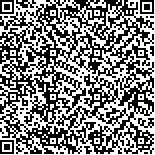| 摘要: |
|
| 关键词: |
| DOI: |
| Received:September 12, 2007Revised:November 19, 2008 |
| 基金项目: |
|
| Collective motion in non-reciprocal swarms |
| Bo LIU , Tianguang CHU, Long WANG |
| (College of Science, North China University of Technology, Beijing 100041, China;
Intelligent Control Laboratory, Center for Systems and Control, College of Engineering,
and Key Laboratory of Machine Perception (Ministry of Education), Peking University, Beijing 100871, China)) |
| Abstract: |
| This paper studies a non-reciprocal swarm model that consists of a group of mobile autonomous agents with an attraction-repulsion function governing the interaction of the agents. The function is chosen to have infinitely large values of repulsion for vanishing distance between two agents so as to avoid occurrence of collision. It is shown analytically that under the detailed balance condition in coupling weights, all the agents will aggregate and eventually form a cohesive cluster of finite size around the weighted center of the swarm in a finite time. Moreover, the swarm system is completely stable, namely, the motion of all agents converge to the set of equilibrium points. For the general case of non-reciprocal swarms without the detailed balance condition, numerical simulations show that more complex self-organized oscillations can emerge in the swarms. The effect of noise on collective dynamics of the swarm is also examined with a white Gaussian noise model. |
| Key words: Aggregation Collective behaviour Collision avoidance Complete stability Self-organized oscillation |

